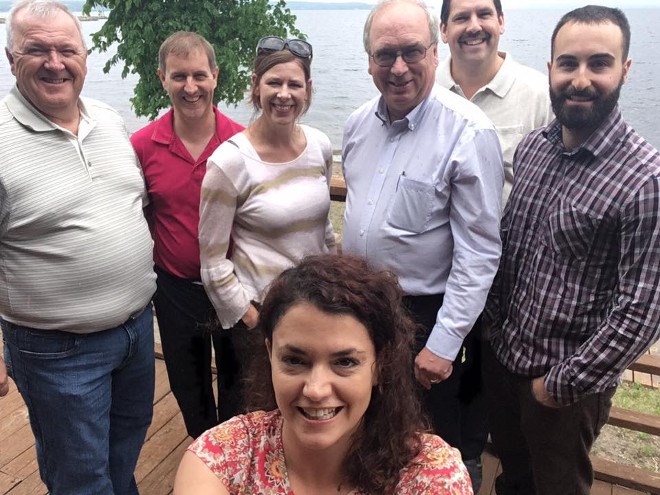The door is wide open for newcomers to northeastern Ontario.
A representative from the Timmins and District Multicultural Centre has been making the rounds across the region to showcase a new web portal – neoimmigration.ca – offering potential migrants a snapshot of what opportunities exist and what life is like in the northeast.
Sylvie Lamothe, the multicultural centre’s project coordinator, has been on the road this spring and summer making presentations to the 29 immigrant-ready communities who are profiled on the website, driving as far south as Parry Sound.
The website features relevant information on housing and family life, working, starting a business, getting an education, and the need-to-know basics of getting settled. It also features video testimonials of those newcomers who’ve successfully integrated into their communities.
The targeted audience, Lamothe said, is immigrants to Ontario, living in the Greater Toronto Area, who are seeking new career opportunities and a better quality of life outside of the major cities.
The northeast has experienced some success in attracting immigrants, but outmigration issues indicate attraction efforts need to be stepped up.
The Northern Newcomer Strategy commissioned by the Northern Policy Institute said the region needs population growth, and newcomers can play a vital role.
They’ve indicated workforce and population shortfalls of 75,000 and 150,000 people, respectively, throughout the North by 2041, and that’s taking into account the expected population growth among Indigenous people.
To meet those targets, this region needs to average 6,000 people annually beginning in 2018 and every year after for 25 years.
“What was see in the North – in terms of newcomers – are secondary migrants,” said Lamothe.
“The folks who immigrated from Brampton and find that there are a lot of opportunities up there, and decide to come north where we have less congestion, fresher air, a lower cost of living, and business opportunities.”
Lamothe plans to draw attention to the portal his summer when she heads to a job fair in Mississauga in August before meeting with the Canadian chambers of commerce for India and China to make partnership links.
The website also points internationally-trained newcomers in the direction of how to get their professional credentials recognized through the various economic development departments within the multicultural centre’s network.
“The portal gives you the information that you need to get here,” said Lamothe.
“The Timmins and District Multicultural Centre provides settlement services for folks who are here now and are having those frustrations. We are able to link them to the right places.”
The website is only part of the multicultural centre’s larger strategy to attract newcomers and repopulate the region, she said.
“To get people to come north takes more than a website. Cochrane has put together a comprehensive immigration strategy and we’re doing regional forums to find solutions on how do we tackle this problem together.”
Lamothe said it’s difficult to identify the reasons why some newcomers are successful in acclimating to the North. Some are post-secondary students who secure employment upon graduation, while others arrive with a needed specialty skill and go into business for themselves.
A few have been successful in franchising opportunities, using that as springboard to expand and diversify their business holdings.
“There are a lot of different factors and things at play that is hard to pinpoint, But definitely having a support system and opportunities up here will make people stay.”




